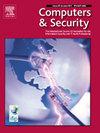An evolutionary wrapper to support intrusion detection system configuration
IF 4.8
2区 计算机科学
Q1 COMPUTER SCIENCE, INFORMATION SYSTEMS
引用次数: 0
Abstract
Detecting and classifying attacks is one of the building blocks of cybersecurity. This is a difficult task, as classification algorithms must deal with a profusion of data used to detect attacks which may be very time consuming. In this paper, an evolutionary approach is proposed to obtain information about a given set of features, as well as to select the best features as input for attack classification algorithms. With this approach, each individual represents an optimized set of features, such that a cybersecurity analyst can evaluate which features and how many of them are required to obtain a suitable metric to detect a specific attack. This set of features improves the quality of attack detection while also reducing the CPU time required for the classification itself. This approach is evaluated using well-known datasets and decision trees generated by C4.5 and Random Forest algorithms for the evaluation and classification. We compare our findings with state-of-the-art results, demonstrating promising advances. Additionally, the features information that can be obtained using this approach is reported, which is useful for making decisions for attack discrimination.
支持入侵检测系统配置的进化封装器
检测和分类攻击是网络安全的组成部分之一。这是一项艰巨的任务,因为分类算法必须处理用于检测攻击的大量数据,这可能非常耗时。本文提出了一种进化方法来获取给定特征集的信息,并选择最佳特征作为攻击分类算法的输入。使用这种方法,每个个体代表一组优化的特征,这样网络安全分析师就可以评估哪些特征以及需要多少特征来获得检测特定攻击的合适度量。这组特性提高了攻击检测的质量,同时也减少了分类本身所需的CPU时间。该方法使用C4.5和随机森林算法生成的知名数据集和决策树进行评估和分类。我们将我们的发现与最先进的结果进行比较,展示了有希望的进步。此外,还报告了使用该方法可以获得的特征信息,这些信息有助于做出攻击判别的决策。
本文章由计算机程序翻译,如有差异,请以英文原文为准。
求助全文
约1分钟内获得全文
求助全文
来源期刊

Computers & Security
工程技术-计算机:信息系统
CiteScore
12.40
自引率
7.10%
发文量
365
审稿时长
10.7 months
期刊介绍:
Computers & Security is the most respected technical journal in the IT security field. With its high-profile editorial board and informative regular features and columns, the journal is essential reading for IT security professionals around the world.
Computers & Security provides you with a unique blend of leading edge research and sound practical management advice. It is aimed at the professional involved with computer security, audit, control and data integrity in all sectors - industry, commerce and academia. Recognized worldwide as THE primary source of reference for applied research and technical expertise it is your first step to fully secure systems.
 求助内容:
求助内容: 应助结果提醒方式:
应助结果提醒方式:


